Dark, or scary chord progressions, are some of the most captivating elements in music production.
They can transform a simple melody into a haunting show-stopper and connect with your listeners on a deeper emotional level.
Plus, contains the power to transport people into a world full of suspense and mystery.
So, as a music producer, knowing how to create beautifully haunting tracks with dark chord progressions is super beneficial.
It will help you create songs that stick with people on a deeper level, stir the imagination, and dominate the competition.
In today’s article, we’ll break down:
- Basics of chord progressions ✓
- Importance of minor chords & minor key manipulation ✓
- Incorporating diminished chords & augmented chords ✓
- Creating tension with dissonant intervals ✓
- Building suspense with only two chords ✓
- Advanced interval and inversion tricks ✓
- Layering sounds for a richer atmosphere ✓
- Unexpected changes for surprise effects ✓
- Dynamics in creating dark sound variations ✓
- Helpful tips, tricks, and techniques ✓
- Much more about scary chord progressions ✓
You’ll know everything about creating scary chord progressions so you can create chilling tracks that keep your listeners on the edge of their seats.
Whether you’re looking to create spine-tingling scores for films, eerie background music for games, or just want to explore the darker side of music production, we’ve got you.
Your creepy sounds will not only tell a story, but create an unforgettable (haunting) experience.
So, let’s dive in…
Table of Contents
Understanding the Basics of Chord Progressions
Chord progressions aren’t just a sequence of chords 一 they’re the heart of your track’s vibe, especially when you aim to create something dark or unsettling. And no, you don’t have to know music theory to understand the basics. Let’s break it down.
-
What Are Chord Progressions? A Quick Refresher
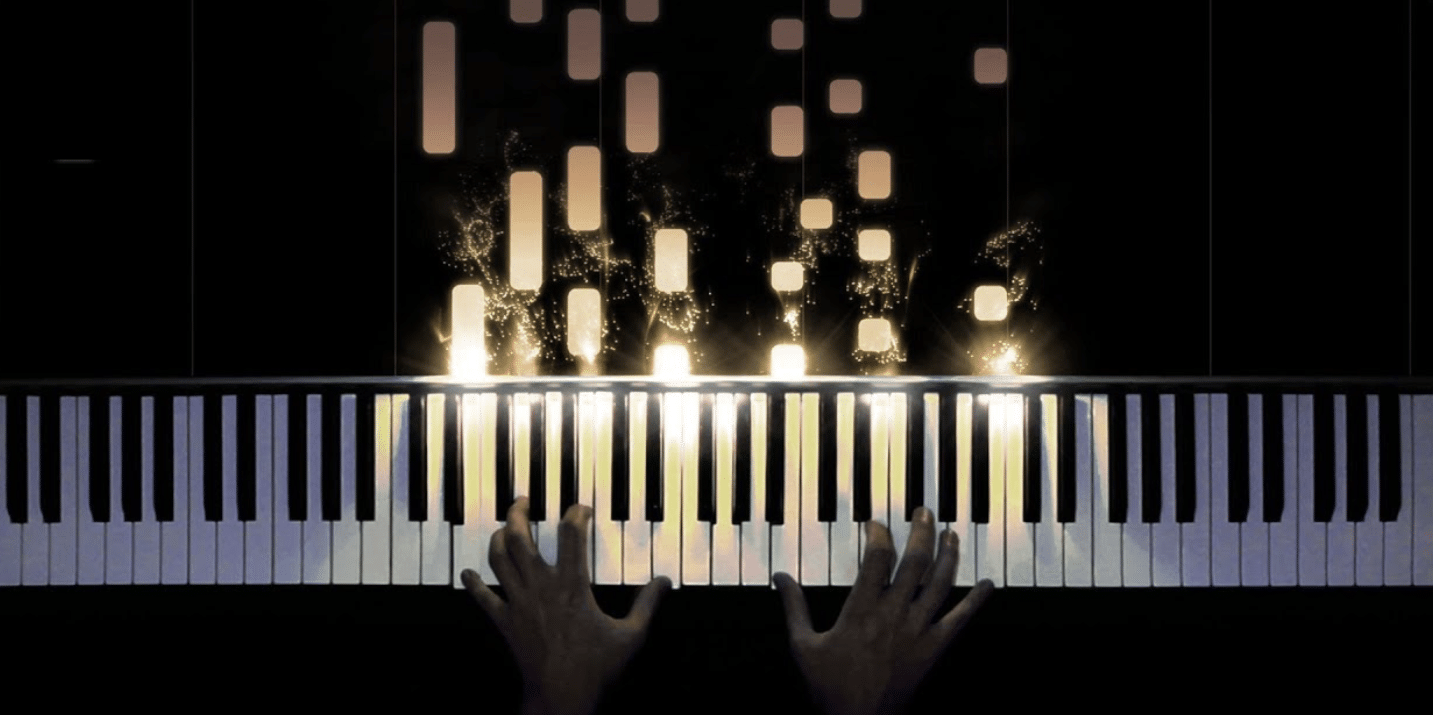
At its simplest, a chord progression is a series of chords that are played in a sequence.
Chord progressions set the vibe and help you build a foundation for legendary melodies and harmonies to co-exist.
Whether you’re aiming for a light, upbeat song or a dark, eerie track, it all starts with your chord progression.
For anyone looking to dive into music production, chord progression manipulation is non-negotiable as they dictate the flow of your song.
Plus, drastically change its emotional impact with just one note.
To get that dark feel specifically, you’ll be looking at certain types of chords and progressions that naturally bring that sense of unease or tension which we’ll cover in the following section.
-
Pro Tip: Why Scary Chord Progressions Captivate Us
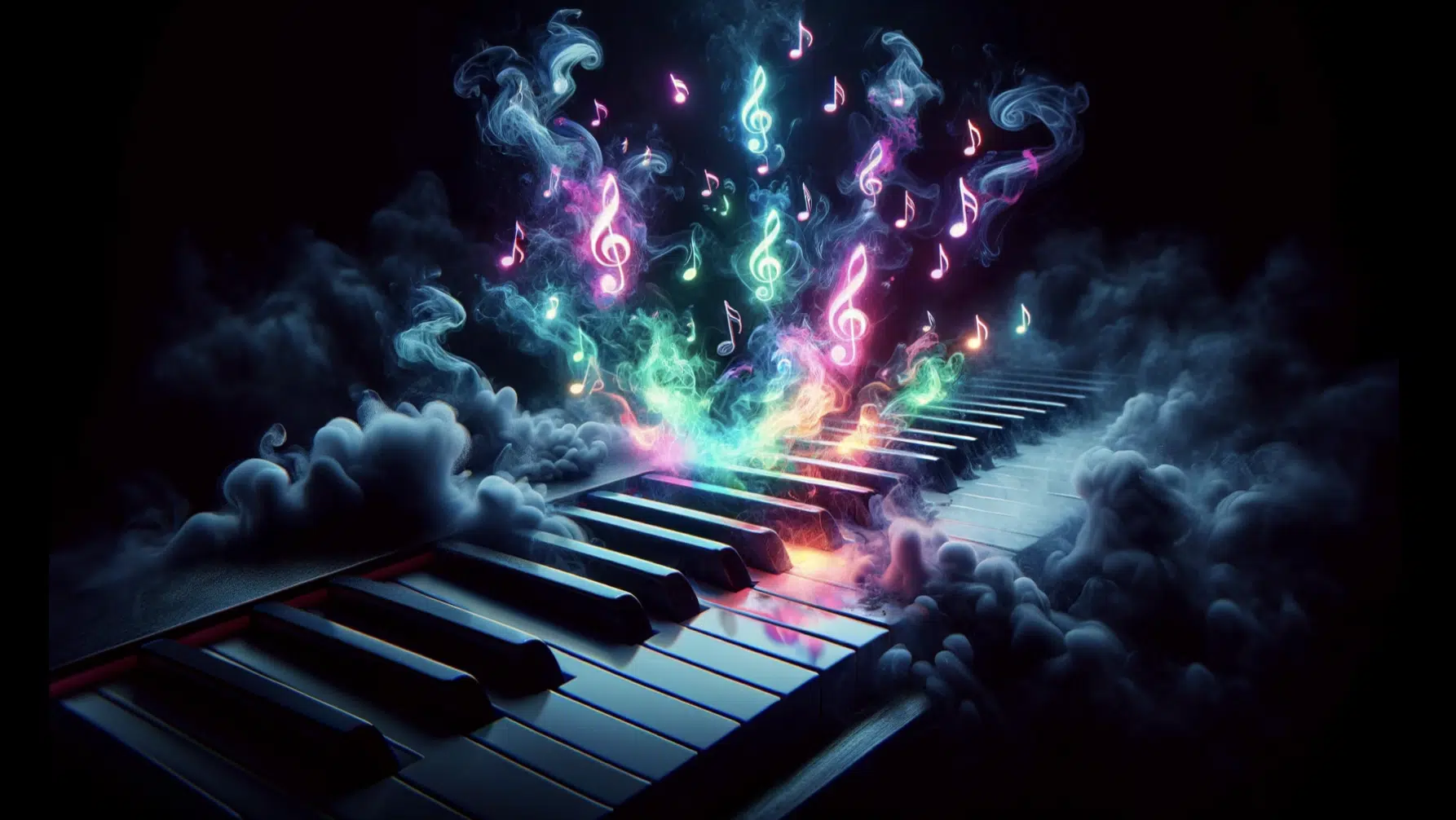
Scary chord progressions have a unique pull because they play into our natural instincts for tension and release.
They use unexpected notes and intervals to keep us on edge 一 making us crave resolution while enjoying the thrill of the unknown.
Side note, if you want to learn how to create unique chord progressions of all types, we’ve got you covered.
-
Minor Chords
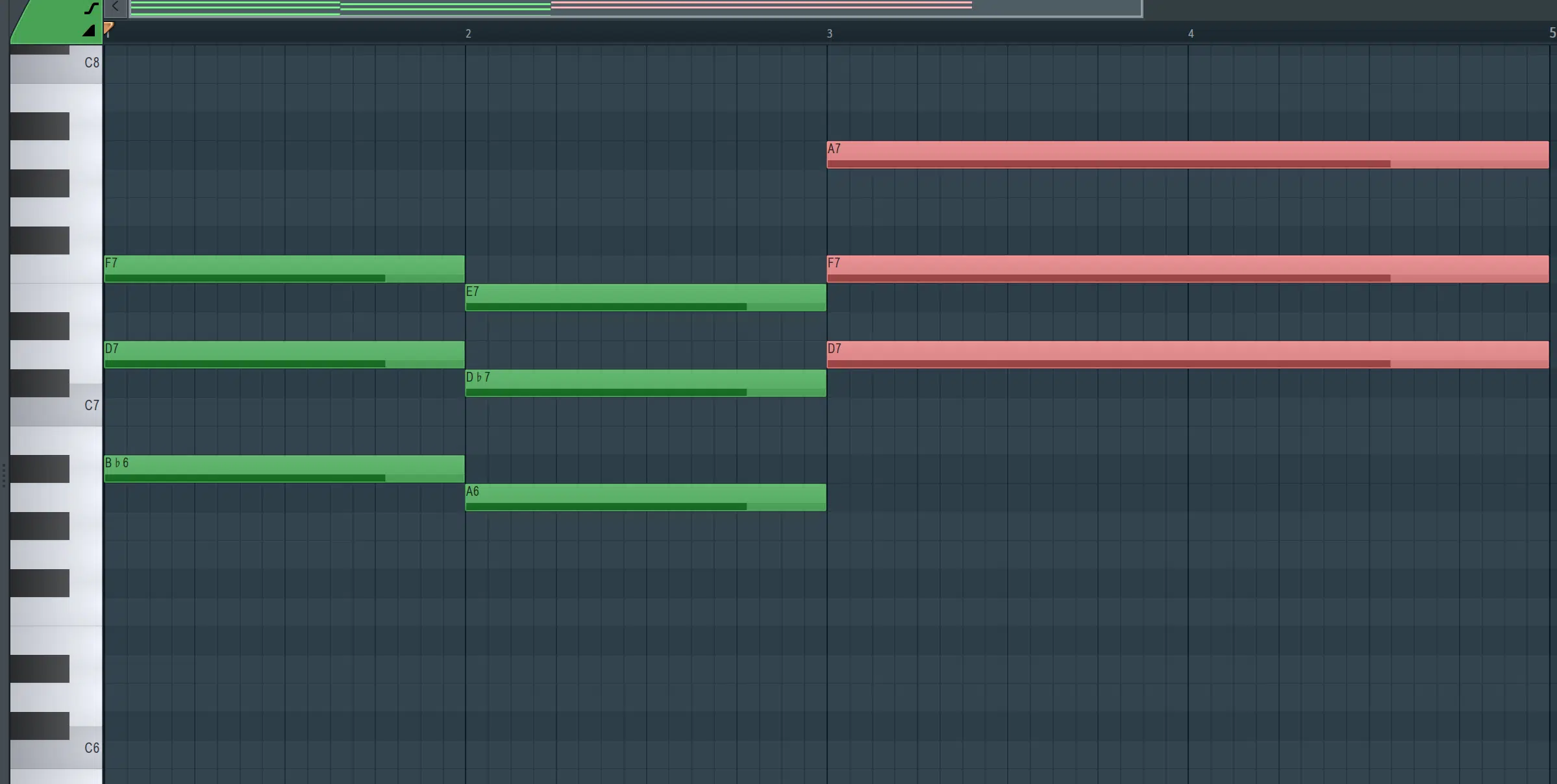
Minor chords carry a sense of sadness or darkness by nature, which makes them essential in producing eerie or suspenseful music.
The structure of a minor chord (featuring a root note, a minor third, and a perfect fifth) creates a sound that’s immediately recognized for its emotional depth.
For instance, an A minor chord (Am) consists of the notes: A-C-E 一 a staple in dark chord progressions due to its powerfully somber tone.
Expanding on this, the use of minor chords in succession can intensify the eerie feeling.
Minor chord progressions like Am – Dm – Em brings in a smooth flow of darkness, as each minor chord adds to the overall gloomy atmosphere.
The D minor chord (D, F, A) following the Am introduces a deeper level of melancholy, while the E minor chord (E, G, B) adds a sense of unresolved tension.
This is super important for creating a haunting musical masterpiece.
NOTE: Try incorporating variations of minor chords, such as adding a seventh note (minor seventh chord) or using a minor chord in an inversion to diversify the soundscape.
For example, Am7 (A, C, E, G) adds a layer of complexity and emotional richness, while playing an Am chord in the first inversion (C, E, A) can offer a slightly different flavor of darkness.
It basically warps the listener’s perception and engagement with the music.
-
Major Chords
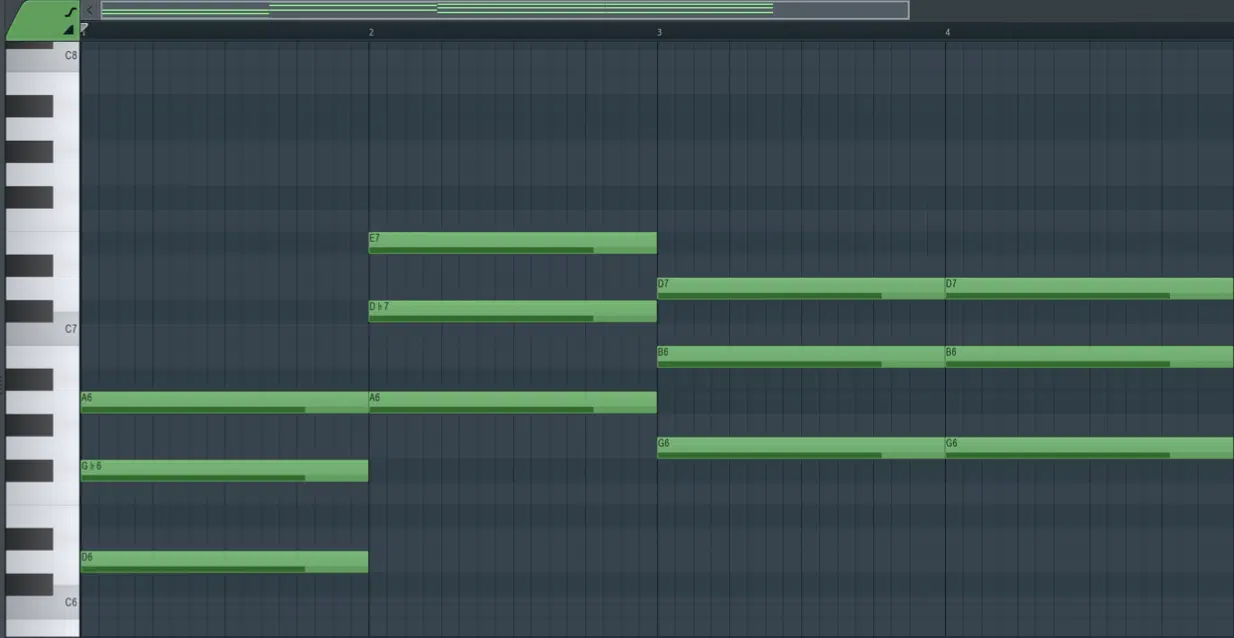
While it might seem counterintuitive, the major scale/major chords share a unique relationship that can help with creating scary chord progressions.
They can provide contrast and make the minor chords even more impactful.
A major chord consists of a root note, a major third, and a perfect fifth 一 offering a brighter sound compared to minor chords.
So, for example, the C major chord consists of the notes: C-E-G.
An interesting way to incorporate major chords into dark music is by using them sparingly to create unexpected shifts in mood.
For instance, transitioning from a series of minor chords to a sudden G major chord can momentarily lift the mood, only to make the return to minor chords more unsettling.
Consider a chord progression like Em – G – D – Am…
The brief switch to G major (the D major as well, being a major chord) offers a slight reprieve 一 making the drop back into Am much more dramatic.
This major chord progression technique is excellent for creating complex emotional landscapes in your tracks.
By focusing on the use of minor chords and the strategic placement of major chords, you’ll be able to create dark and scary chord progressions in no time.
This foundation is key for setting the tone of your dark songs and creating music that resonates with your listeners on a deeper, more emotional level.
-
Incorporating Diminished Chords and Augmented Chords

Diminished chord
Diminished chords and augmented chords are your go-tos for adding a twist to your tracks.
These chords are special because they sound unstable and tense when you hear them on their own, which is perfect for scary music.
For example, a diminished chord could be a Bdim (B, D, F), and an augmented chord might be Caug (C, E, G#).
Diminished chords naturally create a sense of unease because they don’t resolve easily, which keeps your listeners on edge.
Let’s say you’re working in a minor key, like Am; you can throw in a Ddim or an Eaug to spice things up.
So, a progression could look like:
- Am
- Ddim
- Eaug
- Am
This not only keeps the dark vibe but also introduces a level of unpredictability and tension that’s heard right away and hard to ignore.
Using these hand chords strategically can make your music not just dark but also dynamically interesting.
Imagine a track that’s cruising along in Am, and then suddenly, you hit your listeners with a G#dim leading back into Am.
It’s these moments that can really make your track stand out and give it that creepy effect you’re aiming for.
-
Using Dissonant Intervals to Create Tension
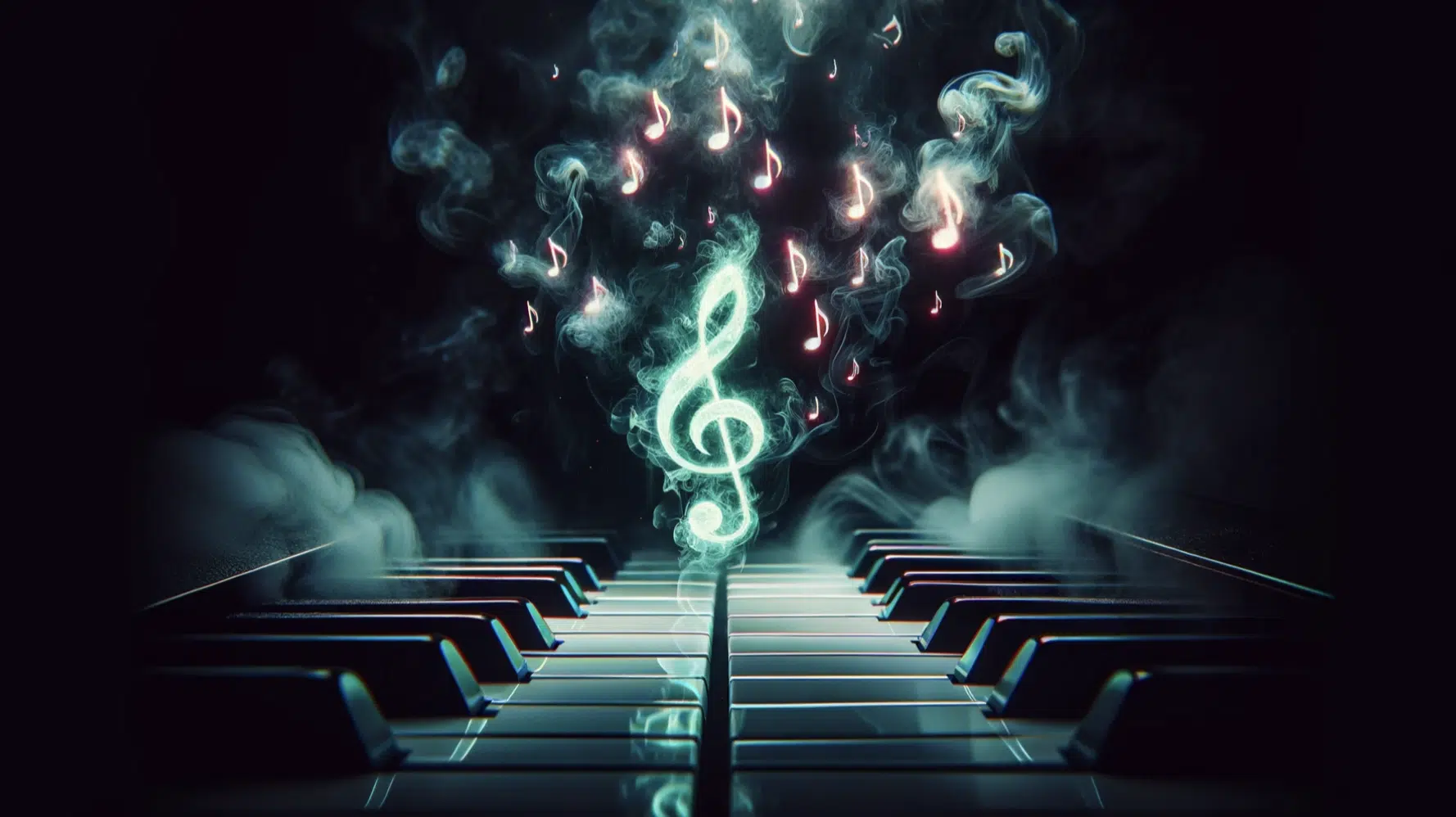
Dissonant intervals are like the secret sauce for scary chord progressions.
And no, they don’t have to be complicated…
Simple combinations, like playing two notes that are right next to each other, can create a big impact when your listeners hear it.
For example, playing the two notes C and C# together is a minor second interval that sounds really tense and unsettling.
You can sprinkle these dissonant intervals throughout your chord progression to bump up the tension by a few notches.
Say you have a chord progression going from Am to E.
If you add a dissonant interval right before the transition (like playing an E and an F together) it’ll make that move to E feel even more dramatic.
These moments of dissonance are one of the secrets to creating that beautiful, dark atmosphere in your songs.
Creating A Beautifully Dark Atmosphere
Producing a song that feels both beautifully dark and engaging involves more than just picking the right chords 一 it’s about how you set the entire mood. When people listen to your track, you want them to get that creepy effect, and the following tips will get you there.
-
The Importance of Minor Keys in Dark Tracks
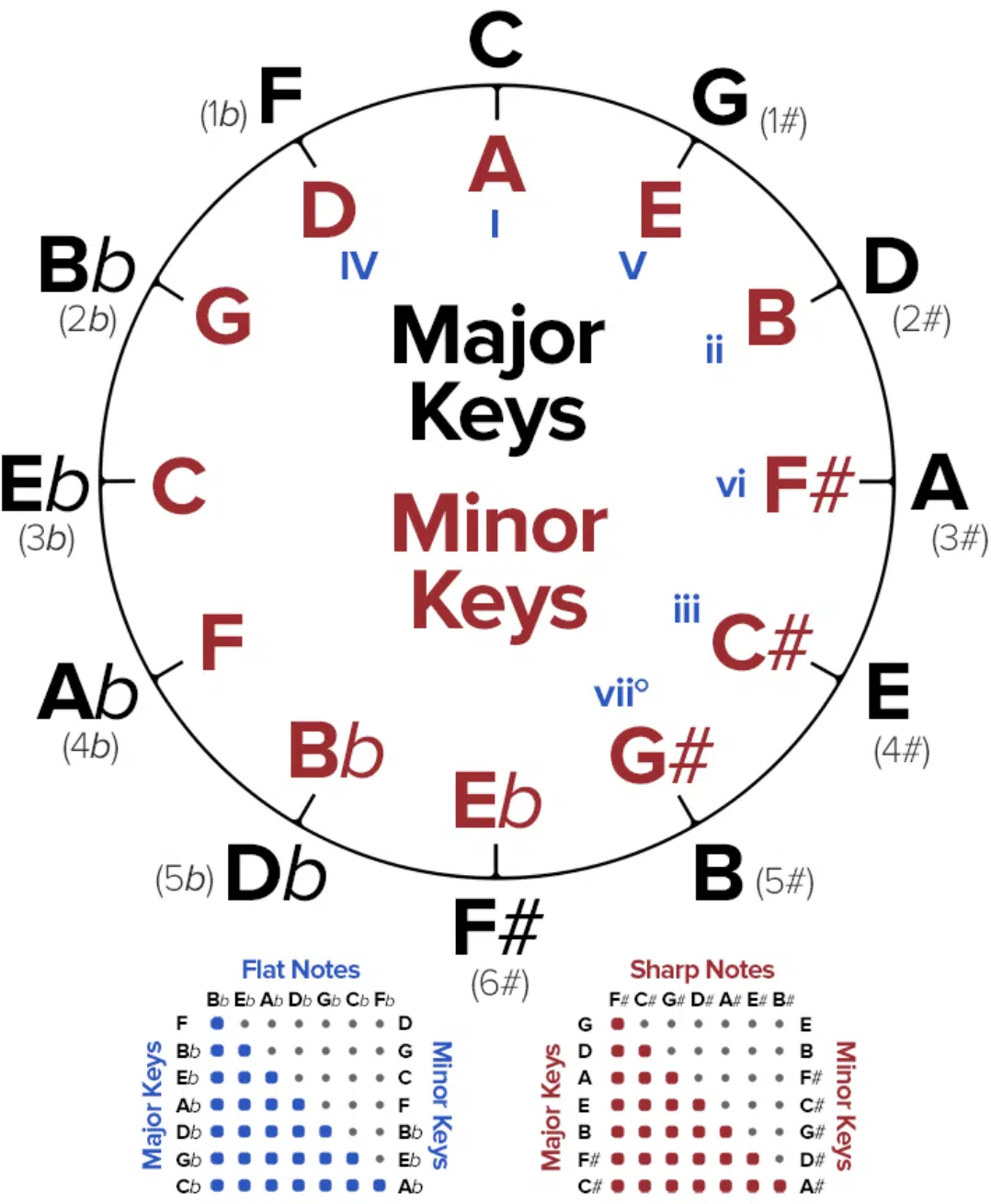
Sticking with a minor key is a solid base for any dark track that makes an impact.
The minor key gives you a lot of emotional depth to work with 一 allowing your chord progressions to naturally express a range of dark feelings.
For instance, if you’re in the key of Dm, your songs will have a tension-filled tone that’s great for dark vibes or scary themes.
A trick to keep in mind is how you use the minor scale to build your progressions.
Starting a track with a chord like Dm and moving to chords like Gm or Am can lay down a deeply haunting vibe right from the get-go.
This use of the minor key as your foundation is key to nailing that dark atmosphere.
-
Pro Tip: Major Key Integration
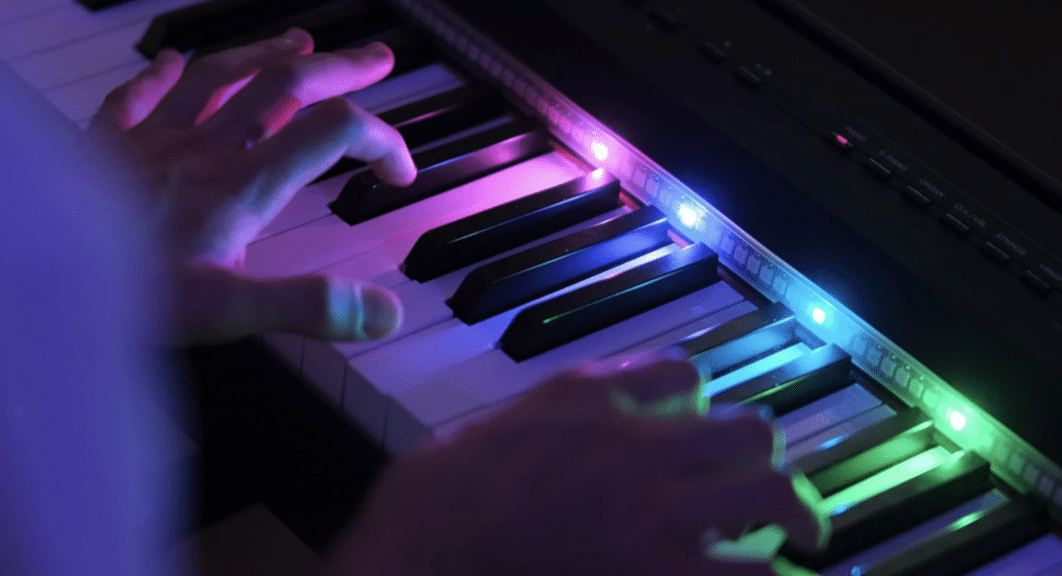
Even though we’re focusing on dark tracks, don’t be afraid to mix in a bit of major key.
This is because major keys can add a really interesting contrast that makes your minor sections pop even more.
For example, if you’re working in Dm, switching briefly to a D major chord before diving back into the minor can surprise your listeners and add depth to your track.
Using the major key sparingly like this can really enhance the dark feel of your music and bring that dissonant sound to life.
-
How to Utilize the Harmonic Minor Scale

The harmonic minor scale is a fantastic tool for dialing up the drama and tension in your music.
It’s like the minor scale but with a twist that gives it a very distinctive sound: the seventh scale degree is raised.
In A harmonic minor, for instance, the G becomes G#, which can make your progressions and melodies feel more tense and exciting.
When creating chord progressions or melodies in the harmonic minor scale, you get this beautiful blend of darkness with a hint of exotic tension.
It’s great for making parts of your song stand out with exhilarating harmony.
NOTE: Try transitioning from an Am chord to an E chord using the A harmonic minor scale. This not only keeps the dark vibe but also introduces an unexpected tension/harmony that’s perfect for scary or dark music.
Tips & Tricks for Creating Dark Chord Progressions
To really make your songs send chills down someone’s spine when they hear it, let’s break down some essential tips and tricks.
-
Select the Right Starting Chord
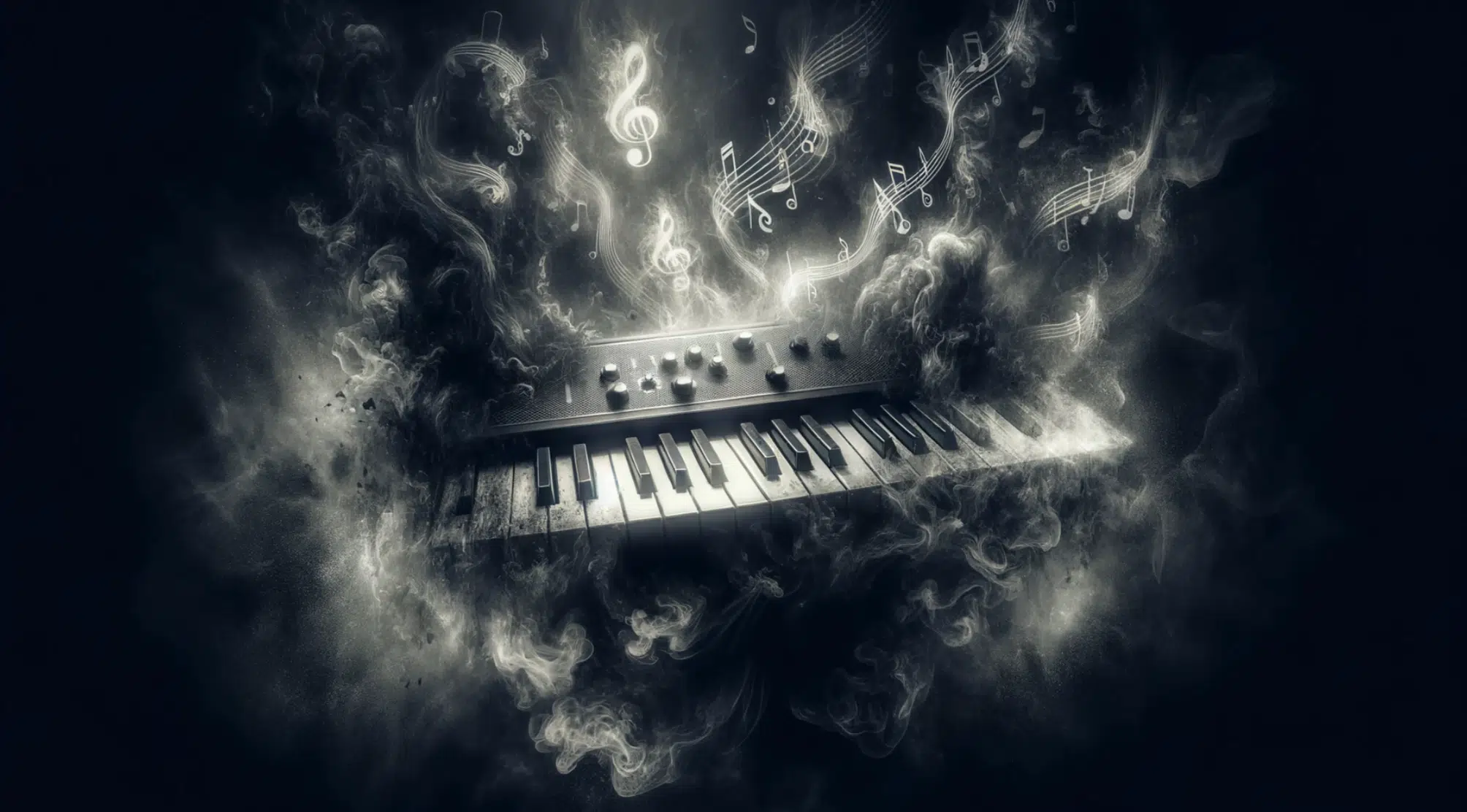
The first chord in your progression sets the tone for everything that follows.
Starting with a minor chord like Am, Dm, or even Eb minor immediately establishes a dark atmosphere.
However, don’t underestimate the power of beginning with something more unsettling, like a diminished or augmented chord, to immediately grab the listener’s attention with a sense of foreboding.
And, of course, captivate them with the tension created.
Always consider the overall emotions you’re trying to convey when people listen.
A chord progression that starts with a minor chord and then moves into dissonant or unexpected chords can mimic the feeling of entering deeper into a dark, mysterious place.
For example, starting with an Am, moving to a G#dim, and then to an Eaug creates a storyline in your music that can be both captivating and haunting.
It’s all about setting a goal and having it heard (or felt, I should say) at it’s maximum impact.
-
Building Tension with Two Chords

Creating tension with only two chords can be surprisingly beneficial in innovative, dark music production.
This technique relies on the careful selection of chords that contrast yet complement each other, which keeps the listeners on edge.
For example, the pairing of an Am chord with a B diminished chord (Bdim – notes B, D, F) creates an uneasy tension, as the minor chord’s sorrow blends with the diminished chord’s notorious instability.
This tension can be heightened by experimenting with rhythm and pacing.
For example:
- These chords in a slow, deliberate manner 一 Allows each chord’s emotional weight to linger.
- A quicker tempo 一 Can instigate a more frantic, unsettling feeling.
Additionally, leveraging dynamics, such as playing the Am softly but the Bdim loudly, can further emphasize the tension between the two.
Incorporating techniques like pedal tones (sustaining a single note, like A, in the bass while switching between Am and Bdim) can also deepen the tension.
This creates a sonic anchor that makes the shift between chords even more pronounced and engaging.
It’s ideal for moments in a track where you want to maximize suspense (aka the climax).
-
Innovative Uses of the Piano Roll for Dark Tracks
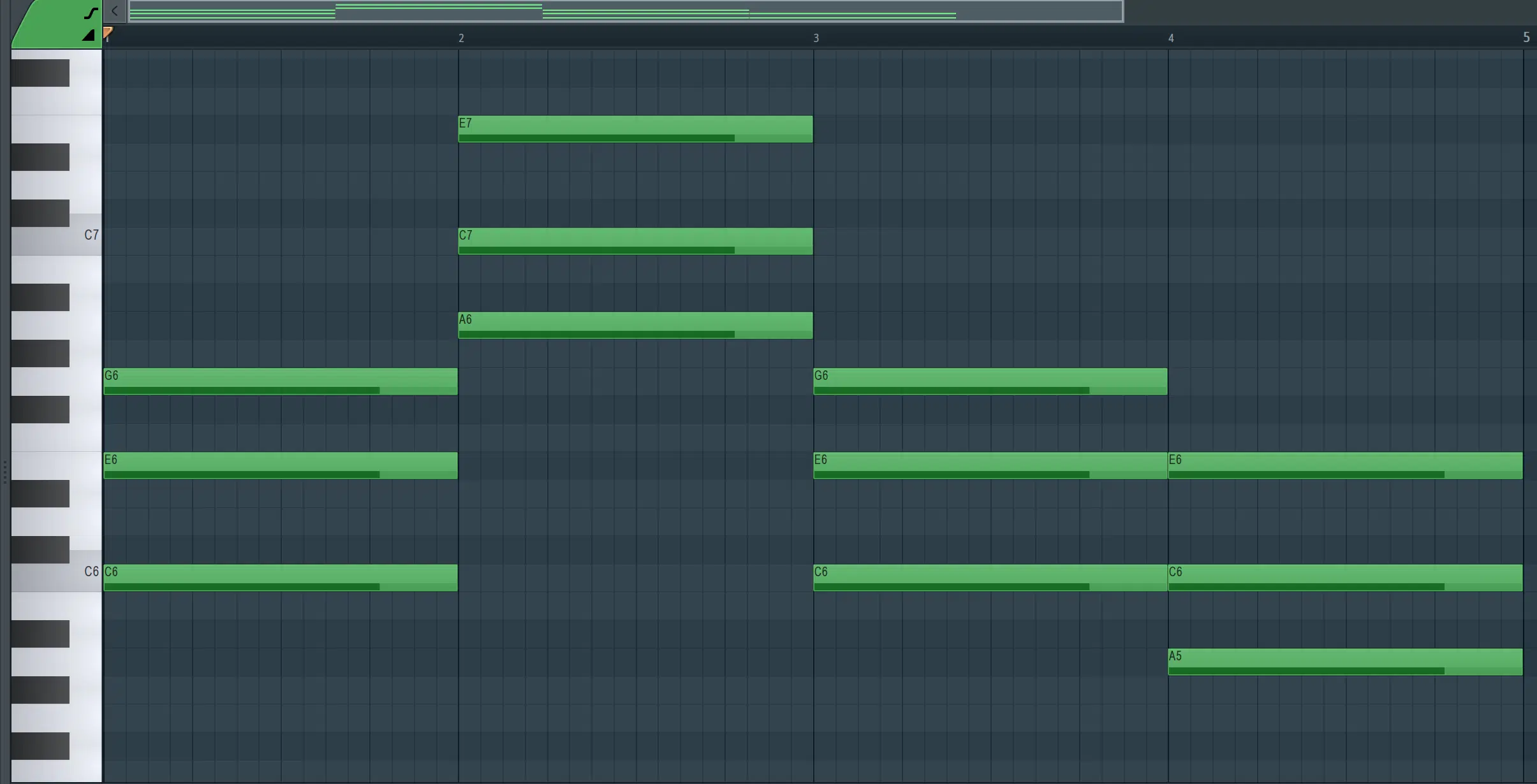
The piano roll in your DAW is a powerful tool for experimenting with scary chord progressions.
You can visually lay out your chords and play with dissonant intervals or unusual chord voicings that might not come to you as easily on a physical instrument.
Don’t shy away from adding all the notes you feel work, even if they fall outside conventional scales or chords you’re working with.
Sometimes, placing a note just a half-step or few half-steps away from another can add a level of dissonance and tension that perfectly amplifies the dark mood of your track.
Experiment with layering notes in the lower octaves to give your songs a deeper, more ominous sound and intriguing harmony.
-
Experimenting with Intervals and Chord Inversions
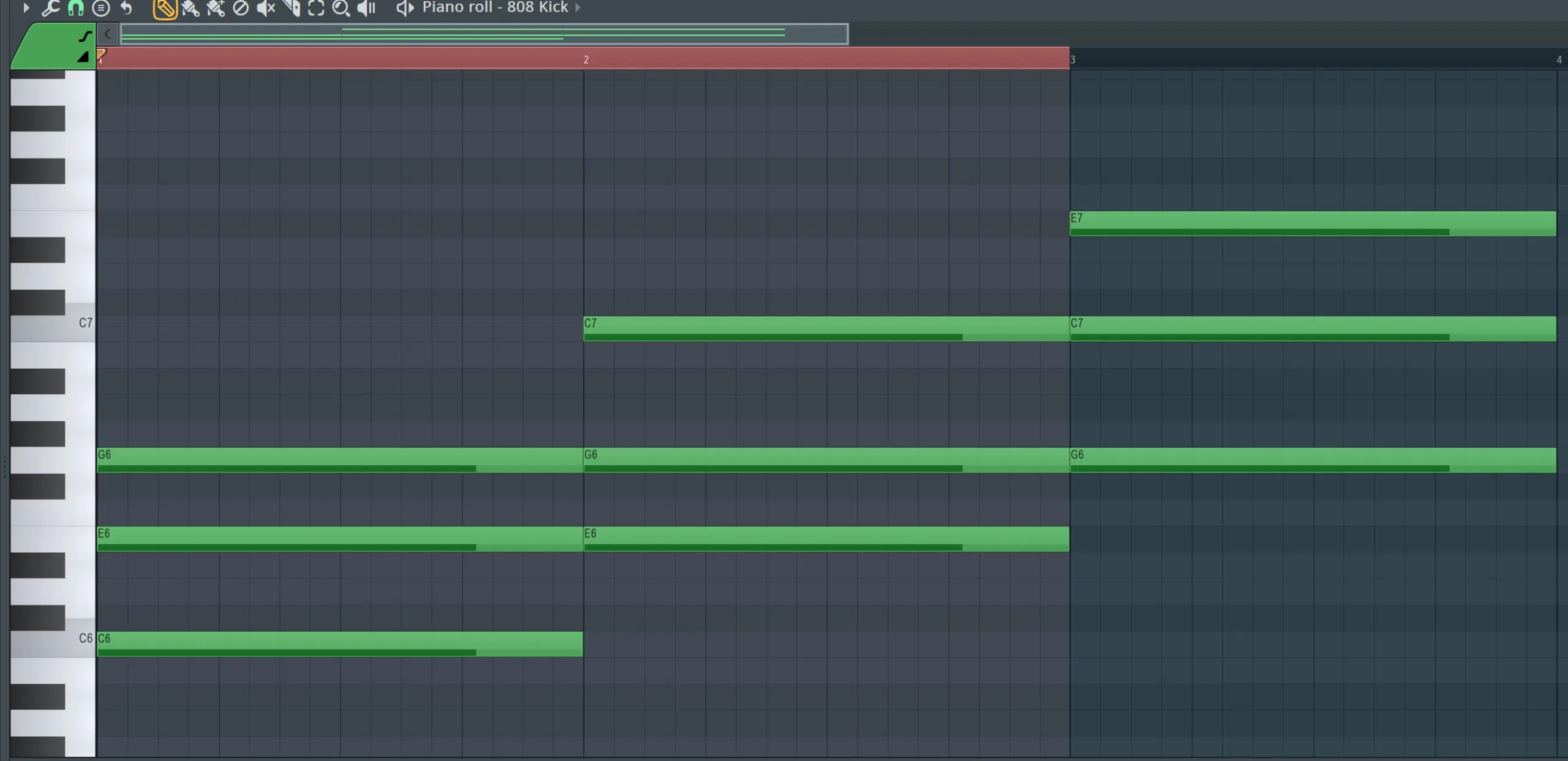
Intervals and chord inversions are powerful tools in adding depth and complexity to scary chord progressions.
Minor second chord intervals, such as C to Db, naturally have a dissonant quality that can bring that tension we’re looking for.
When used sparingly, these intervals can introduce an element of surprise and unease within a progression 一 enhancing its dark character.
Chord inversions offer a way to vary the texture and mood of your music subtly.
An inversion of a minor chord, such as Am/C (where C is the lowest note), can change the progression’s emotional impact.
This technique allows the bass line to move independently of the chords, creating a more intricate and haunting sound landscape.
You can even try combining dissonant intervals with chord inversions for a unique effect and even more tension created.
For example, using an Am chord in its first progression inversion followed by a close dissonant interval like C and D played together, challenges listeners’ expectations and heightens the overall sense of darkness and electricity.
-
Layer Sounds and Use Dynamics
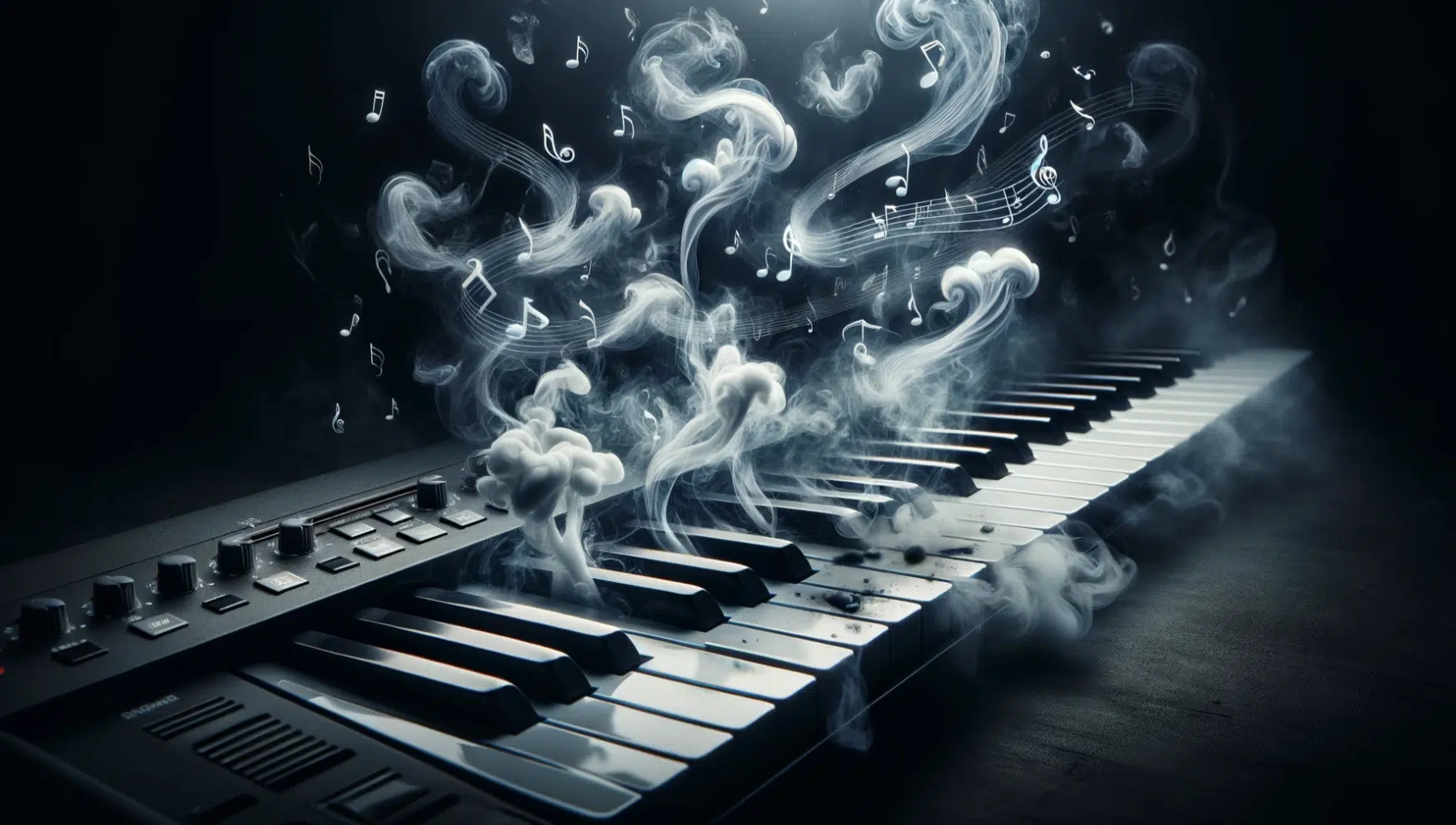
Layering different sounds and manipulating dynamics can significantly amplify the dark atmosphere of your chord progressions.
By combining the melancholic tone of a piano with the ethereal quality of synthesized pads, you can create an epic, multi-dimensional soundscape.
For instance, an Am chord played on a piano, layered with a slowly evolving, reverb-heavy pad sound in the background, can set a deeply haunting mood and build a mysterious aura.
Dynamics play a key role in conveying:
- Emotion
- Tension
- Mysterious aura
Utilizing a wide dynamic range can startle the listener and heighten the sense of unease (think the super scary part of a horror film).
This can include things like softly playing the tense intervals, like the devil’s interval, or chord inversions before suddenly bursting into a loud, dissonant chord.
It makes your chord progression not just something to be heard but something to be felt, drawing the listener deeper into the dark atmosphere you’ve constructed.
Incorporating techniques like reverse reverb on certain chords or using sidechain compression to create a pulsing effect in the background layers can also add to the unsettling feeling.
For example, applying reverse reverb to a Bdim chord can make its entry into the mix feel like it’s emerging from an unknown, mysterious place.
It will make things so dark people will be saying happy halloween.
Scary Chord Progressions: Final Thoughts
Scary chord progressions have the unique power to transform your tracks into a haunting experience that sticks with listeners long after the song ends.
They’re the secret sauce for adding that eerie, unsettling vibe that can make your music truly stand out.
Imagine layering those sinister minor chords with the unsettling tension of diminished chords, or using the unexpected strike of an augmented chord to keep your fans on edge.
It’s all about finding that perfect mix of suspense and surprise that keeps listeners coming back for more.
To really skyrocket your journey into creating these eerie masterpieces, this insanely invaluable Free Advanced MIDI Chord Progressions pack is a must-have.
It’s packed with 24 standout MIDI progressions that you can effortlessly throw into your projects to help them shine and enhance your knowledge of scary chord progressions.
They provide a solid foundation to build upon or manipulate to capture the exact mood you’re after 一 scary, dark, hauntingly beautiful, etc.
With the tools and scary chord progressions essentials discovered today, you’re well on your way to creating tracks that aren’t just songs but spine-tingling experiences (like a creepy movie trailer).
Now, go create scary chord progressions that not only emotionally resonate, but dominate.
Until next time…







Leave a Reply
You must belogged in to post a comment.